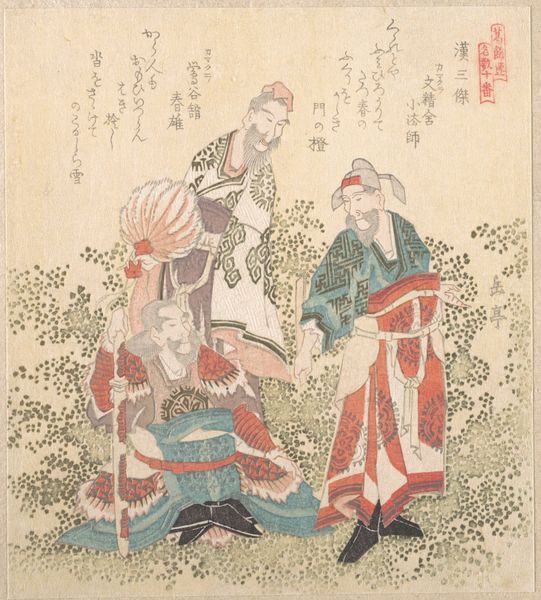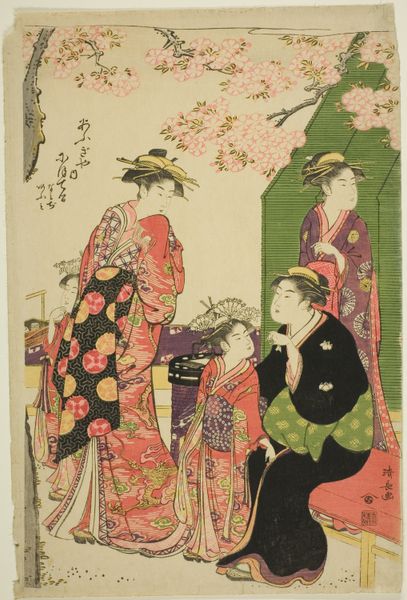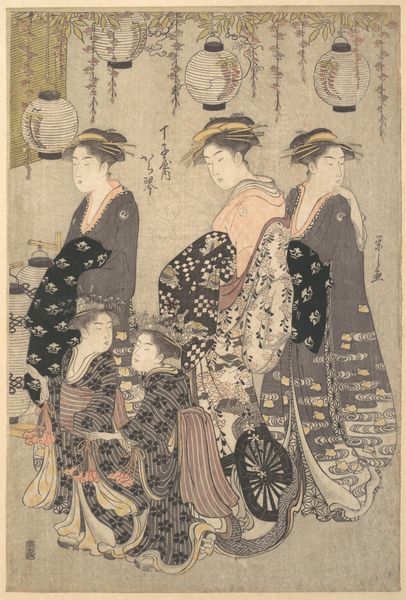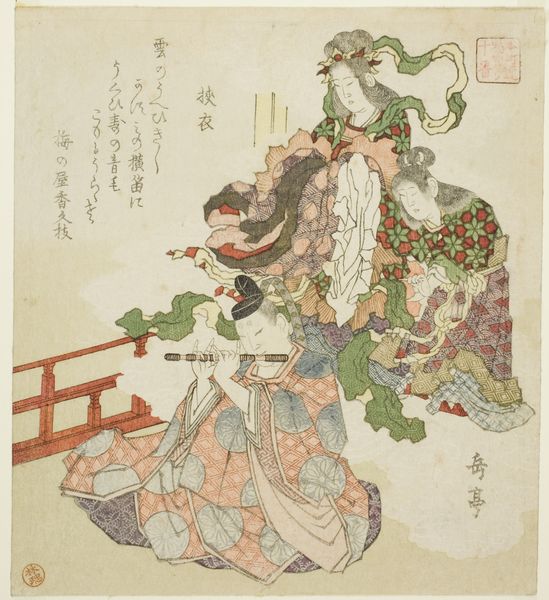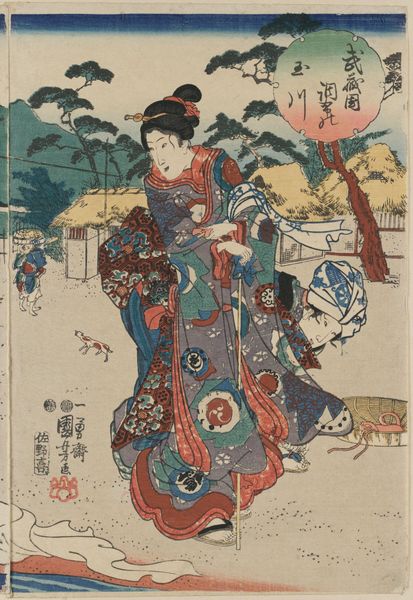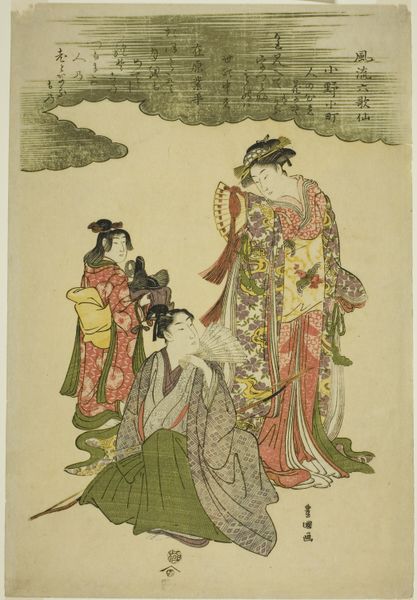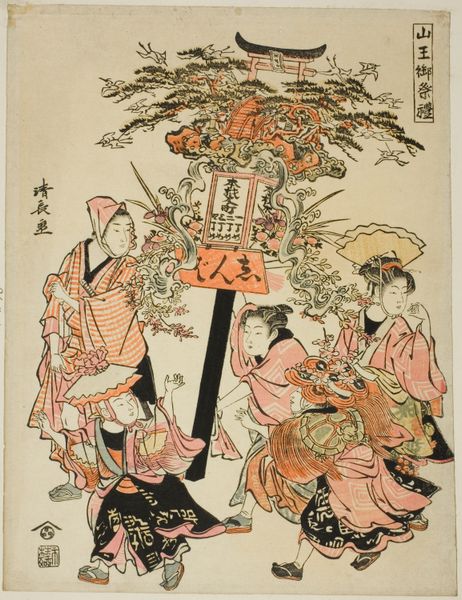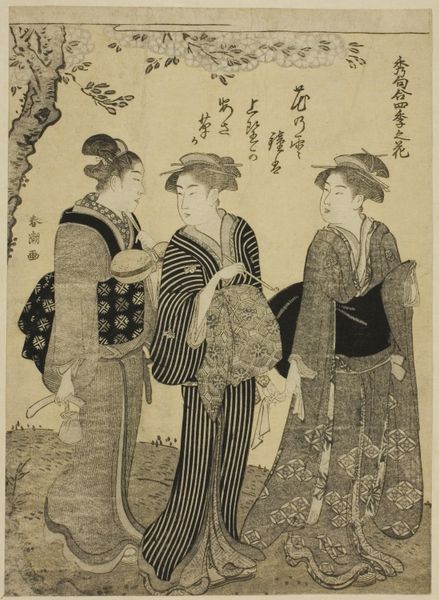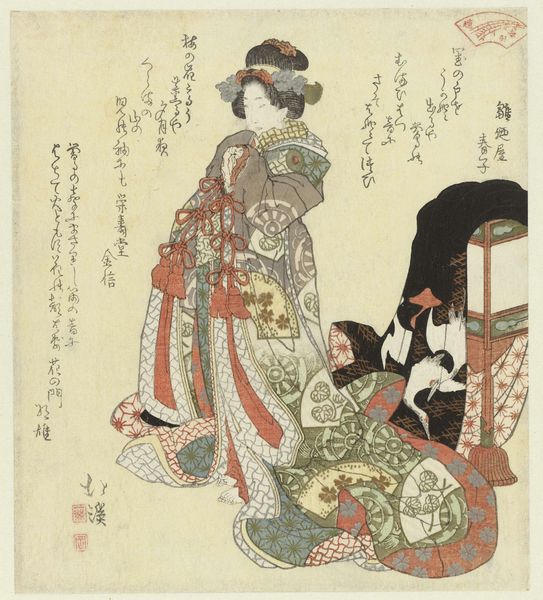
print, woodblock-print
#
portrait
# print
#
asian-art
#
ukiyo-e
#
figuration
#
woodblock-print
#
genre-painting
Dimensions: height 206 mm, width 179 mm
Copyright: Rijks Museum: Open Domain
Curator: Looking at “Courtesan and Two Attendants,” a woodblock print by Utagawa Kunisada from around 1825-1830, presently housed in the Rijksmuseum... what immediately strikes you? Editor: The intricacy of the patterns. Each robe seems to be telling its own visual story, though there is something almost claustrophobic in its intensity. Curator: Kunisada was a leading artist of ukiyo-e prints in the late Edo period. The depiction of courtesans was a popular subject reflecting the vibrant culture of urban life. But it also touches on gender, commerce and social hierarchy. The clothes act as a kind of advert for the elite status afforded to these women, but are also something of a performative display for men, and women as they navigated these networks. Editor: I’m drawn to the formal composition – the figures are arranged almost like a flattened pyramid, aren’t they? It creates a sense of depth despite the inherent flatness of the medium, and really draws the eye to the main figure, who is herself more elaborately ornamented than those accompanying her. The plum blossoms give the setting, and the calligraphic inscription gives a personal tone to the aestheticized characters and landscape, almost a reminder of real experience underpinning them. Curator: That layering effect makes perfect sense within its context of art production and consumption. Woodblock prints like these circulated widely and became vital for solidifying style and disseminating cultural information, particularly amongst those eager to connect with fashionable life, but excluded from it. Consider how Kunisada positions these women; as arbiters of fashion but still subjected to the prevailing rules. They present their image in the public sphere while serving an economic purpose for those with social agency. Editor: And yet the almost overwhelming detailing in their clothing suggests individuality – albeit within defined codes. Do you think it speaks to an element of empowerment for these figures, to exercise personal taste? It’s a balancing act between asserting control over one’s representation and succumbing to a consumerist culture, I suppose. Curator: Absolutely, that tension defines their position. These prints grant us a rare peek into the multifaceted nature of such figures and societal influences on them. Editor: A rich print on which to ponder ideas of personhood, beauty, social performance, and the construction of the gaze.
Comments
No comments
Be the first to comment and join the conversation on the ultimate creative platform.


